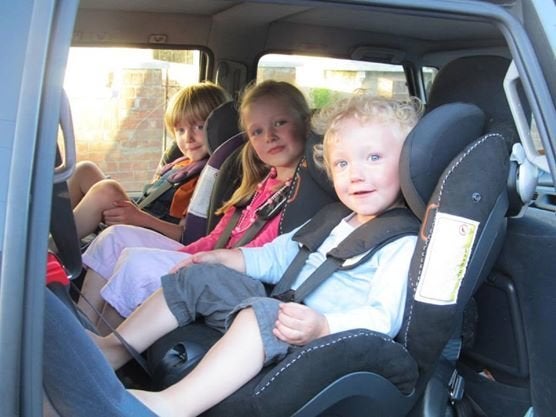A mum has shared an image of the damage caused by a seatbelt during a car accident, in a bid to encourage parents to use rear-facing car seats for their children.
Therese, a mum-of-three who blogs under the name ‘ERF Mummy’ (Extended Rear-Facing), posted the photo below on Facebook on 28 January.
“This is what a seat belt injury looks like on an adult - who was correctly secured in the car and had a frontal collision,” she wrote in the caption.
“It looks very bad doesn’t it. You can see clear trauma to the muscles and tissue of the breast as well as some minor lacerations to the neck from the seat belt burning into you on impact.
“This was an adult - imagine this type of an injury or worse on a child.”
Therese found the photo while researching seat belt injuries for a blog post on extended use of rear-facing car seats
She caveated her post to explain that she certainly isn’t advising against the use of seatbelts.
“The focus is to try and prevent parents/carers/childminders to put children into an adult seat belt before they are old enough,” she explained.
“Far too many jump to a HBB [high-back booster seat] the moment the child hits the minimum weight limit for example.
“It is true that some times we do not have a choice - and a high back booster is the only next option. Perhaps your child has reached the weight limit of their current car seat - or any car seat that has a harness. Then yes you should use a HBB as you should never ever use the harness above the approved weight limit.
“But when you have the option to rear-face your child - take it. And do it for as long as possible.
“Turning forward-facing is not a milestone to look forward to. The differences in safety between forward facing and rear facing - are too great. Don’t be in a hurry.”
According to the UK government website, your child has to be rear-facing until they are 15-months-old.
After this age you can place your child in a forward-facing seat after this time, but you are permitted to keep using rear-facing if you prefer to do so.
It is important to remember: never fit a rear-facing car seat on the front seat where there is an active airbag.
Jan James from UK car seat safety initiative, Good Egg Safety told The Huffington Post UK rear-facing car seats allow children to be better protected from the forces of a collision.
James explained: “In an impact, a forward-facing child is restrained by the five point harness or impact shield. The harness or shield stops their body travelling forward when the vehicle crashes, restraining them in their child seat.
“However, their head is not restrained and continues travelling forward. A young child’s head is 25% of his or her body weight, and in a collision this puts large amounts of force and pressure on their fragile neck and spine.
“When a child is rear-facing, they are pushed back into their child seat, which keeps their head, neck and spine aligned.
“This greatly reduces the force their body is subject to, as it is spread through the back of the child seat.
“Forward-facing seats don’t put children in danger, however they are not as safe as rear-facing car seats.
“Good Egg Safety recommends you rear face your child for as long as possible. For further information please read what are group 1,2 rear facing car seats.”

Kevin Clinton, head of road safety at the Royal Society for the Prevention of Accidents (RoSPA), concurred: “It’s best to keep your baby in a rearward-facing seat for as long as possible because it provides more protection for their head, neck and spine than a forward-facing seat.
“Most rearward-facing seats in the UK keep the baby rear-facing until they are 13kg in weight or 15 months old, however, some seats allow children to stay rearward-facing for longer.
“Only move your child into a forward-facing child seat with an internal five-point harness once they have exceeded the maximum weight or height for the rearward-facing seat and they can sit up unaided. However, don’t worry once your child is ready to go in a forward-facing seat; these are very effective at protecting children if there is a crash.
“Whatever seat you use, make sure that it can be securely fitted in your car before you buy it. Every time it is used check that it’s properly fitted and that your child is securely held in the seat.”
“For more advice, go to www.childcarseats.org.uk”